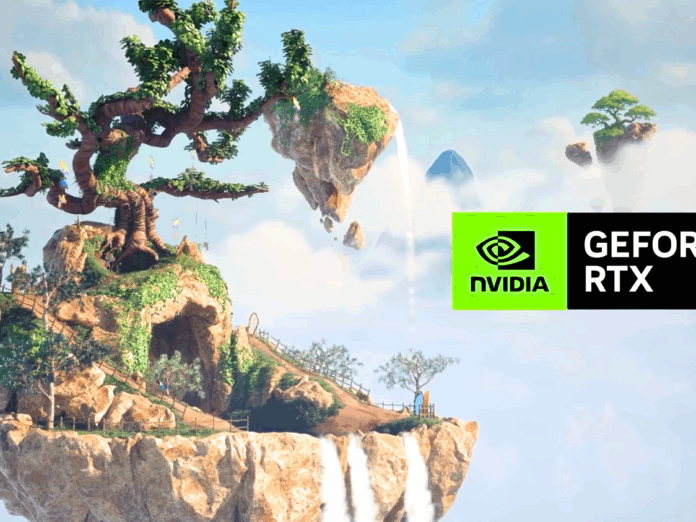Nvidia presents the “Bonsai Diorama” tech demo for Unreal Engine 5.6.1, which combines RTX Mega Geometry, ReSTIR Pathtracing, and DLSS 4.
Nvidia regularly releases new tech demos that highlight various new features. “Lighting” is the keyword here, because with the “Bonsai Diorama” demo, Nvidia is showing off the capabilities of “RTX Mega Geometry,” which you could see in Alan Wake 2, for example.
RTX Mega Geometry as a problem solution
The new tech demo appeared as part of an update to version 5.6.1 of the RTX branch of Unreal Engine.
This engine branch usually contains experimental features for UE5 developers, including RTX Mega Geometry.
With RTX Mega Geometry, Nvidia aims to resolve the discrepancy between calculated and rendered geometry.
- Previous ray tracing implementations worked with a simplified version of the game world – the so-called “Bounding Volume Hierarchy” (BVH).
- This data structure envelops the geometry of a game in hierarchically arranged bounding volumes to speed up the complex ray calculations.
The problem: Until now, the BVH structure contained significantly less detail than the actual game world displayed, resulting in visual artifacts such as incorrect shadows and blurred reflections.
RTX Mega Geometry introduces a new level to this hierarchy: the Cluster Acceleration Structure (CLAS). This makes it possible to process up to 100 times more triangles during ray tracing while incorporating fully detailed Nanite geometry from Unreal Engine 5.
In short: Nanite is the UE5 system for managing virtualized geometry, which can render billions of polygons in real time by automatically adjusting the level of detail based on the distance to the camera.
This means that shadows now fall where they belong, reflections show every detail without blurring, and moving objects are correctly captured by ray tracing. You can see how this works in practice in the following YouTube video of the bonsai diorama demo:
At the same time, Nvidia promises that CPU utilization, VRAM usage, and calculation time for BVH updates will be reduced.
At the same time, Bonsai Diorama uses full path tracing through “ReSTIR PT” (Reservoir-based Spatiotemporal Importance Resampling). ReSTIR is an algorithm that, according to Nvidia, intelligently selects the light sources that contribute to the calculation of a specific pixel.
Nvidia promises great advances here as well, with real-time path tracing at 60 frames per second. The technology itself also works with Nanite meshes to deliver physically accurate lighting while significantly reducing the cost of lighting calculations.


